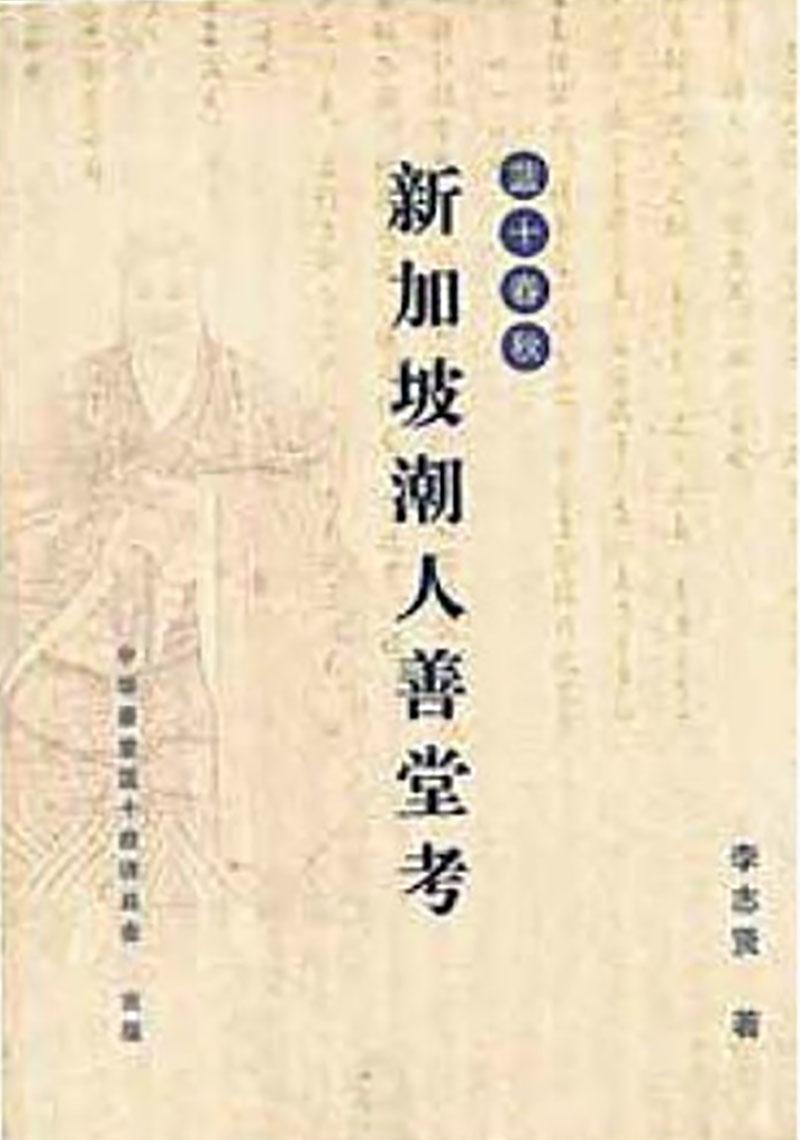First study of Teochew charity halls
The first study of Teochew charity halls in Singapore
December 11, 2017
Many people may not know what "Blue Cross" is, or even have never heard of it.
Rich historical and social significance
"Blue Cross" actually has a rich historical background and social significance. In 1942, after the Japanese army occupied Singapore, there was a lack of material resources and insufficient medical and health equipment. There were countless deaths of the elderly, the disabled, hunger, and illness, and no one to collect the bodies of the poor after they died. Under the rule of the Japanese warlords, almost all civil society organizations were banned from all activities, but the charity halls as charitable organizations continued to operate.
The service objects of the Teochew Charity Hall were originally mostly Teochew communities with blood or geographical relations, but due to the needs of the environment at the time, the charity halls in Singapore united to form the "Blue Cross Charitable Institution", referred to as the "Blue Cross Association", and adopted the "Blue Cross" as the emblem. It took on the social rescue mission of saving the wounded and the poor, providing medical treatment and medicine to residents of all ethnic groups, and collecting corpses for free.
The Blue Cross Charitable Institution recently published the first book dedicated to the study of local Teochew Charity Halls, "Blue Cross Spring and Autumn: A Study of Teochew Charity Halls in Singapore", written by Li Zhixian, Associate Professor of the Department of Chinese, Faculty of Arts and Social Sciences, National University of Singapore.

Based on the original first-hand data research
"Blue Cross Spring and Autumn: A Study of Teochew Charity Halls in Singapore" adds new research results to the study of the spread of Teochew Charity Halls in Singapore, Teochew folk beliefs, customs, early Singapore immigrant society and charitable activities, etc.
Author Li Zhixian said: "The belief in Dafeng Zushi and the charity hall are a unique cultural and social resource of the Teochew people. They were spread and developed by the Teochew people who immigrated from the Teochew area of China to various parts of Southeast Asia in the early days. There are already rich research results on the Teochew charity halls in China, and some scholars have also conducted research on the Teochew charity halls in Thailand and Malaysia. But no one has previously conducted special research on the charity halls in Singapore.
Li Zhixian said that this book is mainly based on original first-hand materials, such as meeting records of various charity halls, archival documents, historical photos, interview records, oral history, field surveys, participant observations, and news reports, etc., to conduct in-depth and multi-level textual research on the history and development of the Teochew charity halls in Singapore. Therefore, this book is highly original and is an academic monograph with solid evidence, conclusive research, and strict adherence to academic norms.
Questioning legends and proposing new perspectives
Li Zhixian said: "As a historian, it is my goal and professional spirit to pursue the truth of history with critical thinking, which is reflected in this book.
"Blue Cross Spring and Autumn: A Study of Teochew Charity Halls in Singapore" also questions some of the rumors that have been passed down by word of mouth and even by misinformation, and puts forward many new perspectives.
This book also puts forward some of the current neglected problems and future challenges of Teochew Charity Halls in Singapore. It believes that if Teochew Charity Halls in Singapore want to be passed down in the long run, they must balance the development of charity and religious rituals, and use this to maintain and expand the existing cross-domain charity network. It is only a single way to provide welfare work and community services, which is not enough to effectively promote the public's attention to charity halls in the long run. It is necessary to strengthen the public's understanding of the connotation and spirit of the religious rituals of the charity halls and strengthen their identification with the charity hall culture, so that the Teochew Charity Halls can withstand the test of the long run. It can also continue to be a unique folk organization of the Teochew people in modern society that combines religious beliefs and charity, so that they will not be in the future. Li Zhixian said: "How to share academic research results with people from all walks of life outside the academic community is an issue that I have always been concerned about. The materials for this research topic are taken from society, so the research results must also be used in society to highlight their practical significance and social value. I have always believed that doing academic work is not in an ivory tower, and we should not only care about the academic value of research results, but also their social significance, especially the humanities and social sciences."

